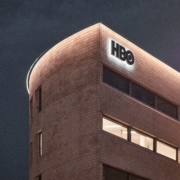UPS And The Omen For Marketing
UPS ditched its CMO. And, UPS eliminated the CMO role completely. While it is true that that marketing does not solve every organizational problem, it is also true that the CMO role, when executed properly, is a necessity.
This rejection of the CMO and the role is not a surprise. But, it is a bad omen for marketing.
In November 2023, The Wall Street Journal reported on a McKinsey & Company (global consulting) study showing that the divide between the CMO and the CEO was a growing rift. The study indicated that CEOs and their C-Suites did not fully understand what the CMO does and how CMO strategies and activities contribute to high quality revenue growth.
The Wall Street Journal also quoted a Forrester (market research) study indicating specific areas of this Andreas Fault line of CEO-CMO misunderstanding. For example, 97% of CEOs believe their brand-businesses satisfy customer needs while only 75% of CMOs see the brand-business satisfying customer needs. Ninety-percent (90%) of CEOs believe their brand-business strategies are customer-driven while only 58% of CMOs believe this is true.
Unfortunately, for years, marketers have been largely responsible for the lack of commitment afforded to the CMO role by the C-Suite. This debasement of the CMO role continues to be a tragedy for brand-businesses. For example, three years ago, in a Deloitte CMO survey, data indicated that CMOs are not fulfilling responsibilities that go beyond brand recognition, brand value and specific tactics. In that 2018 study, 34% of the 200 responding CMOs said their role in their organization was ‘storyteller’ while only 20% said their role was identifying and mapping new routes to client revenue. In other words, CMOs focus first on being the Mother Goose of marketing rather than focusing on the brand-business results as the first priority. If the CMO cannot demonstrate how marketing strategies and activities contribute to high quality revenue growth, then it is no wonder the C-Suite is disgruntled.
Three years later, in Deloitte’s 2021 CMO survey, CMOs said their focus is on short-term value. The study reported that CMOs still had no solid idea if what they were doing had any long-term value. This is unacceptable. If something is worth doing then it is worth measuring. Further, brand-business management is an ongoing process.
Brand-business building and trustworthiness take time. Short-term is important. If there is no short-term, there is no long-term. But, for enduring profitable growth of the enterprise, there needs to be a long-term.
Marketing needs a transformation.
First, let’s get the definition of marketing correct. In its article on UPS’ elimination of the CMO role, a Forbes.com author states that marketing is “to sell or bring to market.” How about we use Dr. Phil Kotler’s definition: “marketing is profitably satisfying customer needs.” If you use the Forbes.com definition, you see part of the problem: no mention of profitability. There is no use selling or bringing to market anything if it is not profitable. The C-Suite wants to know that there is value to what a function does on behalf of the brand-business. If there is no profit, then the work is a hobby.
Furthermore, selling is a manufacturer’s function. Value is a customer’s creation. Value is determined by the customer. A customer pays for the brand-business product or service. This creates brand-business value. There is no brand-business value unless there is customer value. And, customer value depends on what a customer receives (benefits and rewards) relative to what the customer pays (money, time, effort) multiplied by trust.
Second, the fractionalization of marketing is a death-wish for the marketing profession. Marketers have allowed marketing to be sliced, diced, spliced, strangled and mangled by specialists competing with each other for limited corporate resources. The CMO’s role is often reduced to managing this competition and attempting to force co-operation.
By allowing this to happen, marketers are marginalizing marketing and trivializing the role of the CMO, turning this crucial position into coordinator, mediator and arbitrator. Whether your brand-business is BTB or BTC, the CMO becomes the chief referee.
The Wall Street Journal points to the proliferation of “marketing-adjacent” titles and responsibilities as confusing. By fractionating the functions, CEOs perceive the CMO to be less capable of “overseeing” the wide array of responsibilities that CMOs now face.
Having said this, the C-Suite is partly to blame. The reluctance to trust the CMO has led to CEOs bringing in other players to ensure that there are trusted actors who can make things happen profitably. Also, CEOs profess to understand the role of marketing.
Storytelling, advertising, digital channels and devices all need attention, of course. But, effective marketing is not merely about message and media management. It is about brand-business management. Marketing is fundamentally about attracting and retaining customers for enduring profitable growth. Marketing is about managing the business. Managing the business is bigger than managing messages and media. As Peter Drucker, the most respected management guru ever, once said, “The purpose of business is to create a customer.” Without customers paying for a product or service, there is no brand-business value.
Third, brand-business leaders must stop separating brand and business. How you run your brand is how you run your business and vice versa. Brand management is business management and vice versa.
The C-Suite must no longer distinguish between the business plan and the brand plan. There is only one plan: it is the brand-business plan. The purpose of brand management is the enduring profitable growth of the business. The purpose of the business plan is the enduring profitable growth of the brand. The three functional responsibilities for building enduring profitable growth are Finance, Operations and Marketing. That is, financial discipline, operational excellence and leadership marketing. This is not a horse race. There is no Win, Place, Show. A functioning, valuable brand-business needs all three of these strategies – financial discipline, operational excellence, leadership marketing – implemented.
The authors of the brand-business plan are the CMO, the COO and the CFO. The owner of the plan is the CEO. But, the CMO has an incredible role to play. The CMO brings a distinctive perspective. The CMO is responsible for:
- Helping define the growth strategy.
- Achieving organizational alignment behind a common brand- business purpose and direction.
- Helping define the Brand-Business priorities.
- Developing and implementing a Balanced Brand-Business Scorecard. And,
- Leading customer-driven innovation through providing insights into customer needs and problems while helping to define the focus for development of innovative insight-driven products and services.
- Developing the price-value strategy…
- Internal and external brand-business communications.
Marketing is all about how to profitably manage customer-driven, top-line growth. This is the goal of the brand-business plan.
The elimination of the CMO role at UPS was inevitable. Marketing as we know it will continue to decline unless marketers move to transform marketing and reform the CMO role from a marketing communications role to a brand-business leadership role.
Shame on marketing when often the first question for a new CMO is, “What will the new advertising be? Will there be a new slogan? Will there be a new advertising agency?” “What is what digital do we like best?”
The CMO must be responsible for building and managing the Brand-Business plan.
- The CMO is the voice of the customer, whether a BTB customer or a consumer.
- The CMO should know more about the customer than anyone else in the organization. The CMO is the customer advocate.
- The CMO must lead the effort to drive true customer-insight focused innovation.
- The CMO must focus on both the short-term and long-term. The COO, who now rules at UPS, by virtue of the function, focuses on the short-term. Managing and growing a brand is an ongoing function. The CMO must learn how to manage both of these contradictory pathways.
UPS has work to do in many areas. Clearly, marketing is only one of these.
UPS has placed the brand-business under the aegis of the COO. The COO has a short-term focus. Here is a marketing observation: when the brand-business is placed under the control of a function with a primary focus on the short-term, the brand-business gets the short stick. Brand-businesses are promises of what the brand-business will do for the customer. This is a future-focused operation.
To avert more UPS situations, marketing must reassert its role as the leader in guiding the development of customer-driven growth strategies that lead to brand-business value creation and enduring profitable growth. Digital transformation is necessary. But, what you are communicating and why and its impact on enduring profitable growth are critical.
The future of marketing will depend on leaders who understand marketing’s role as driving a brand-based, customer-focused business that attracts and retains customers resulting in sustainable, profitable growth. Marketing is more than a multi-channeled, multi-device communications role; it is a brand-business management role.
There may be no going back for UPS. But, for marketing and the CMO, there is a lot of hopeful opportunity for a transformation.










